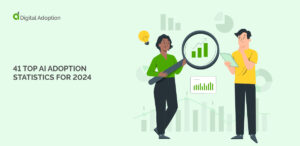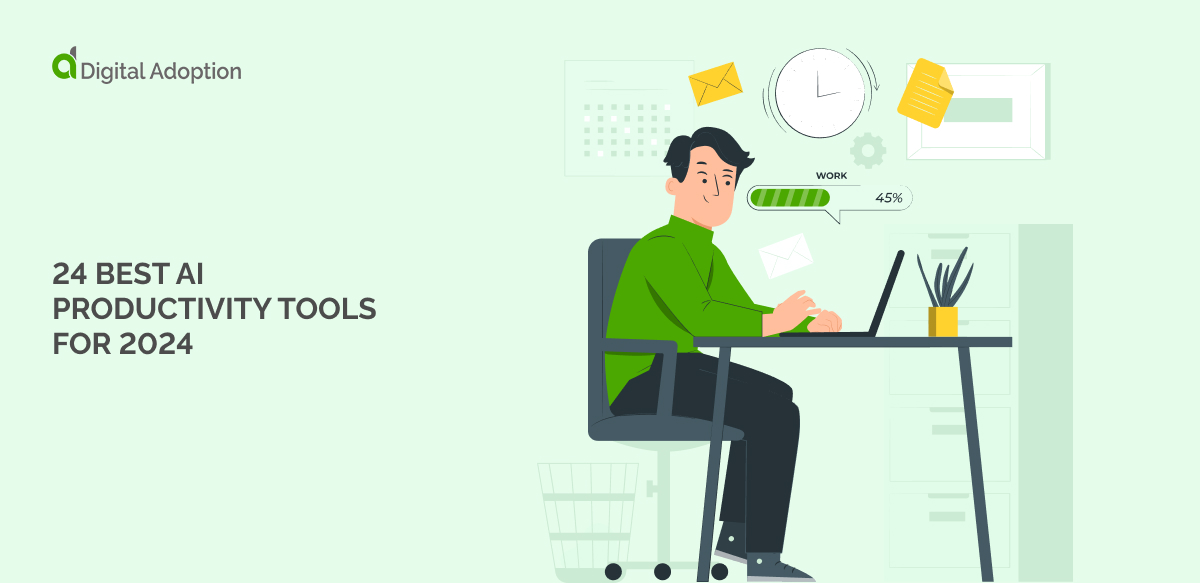Where is your enterprise on its digital adoption journey?
Is it at the very beginning, or are you experts in maximizing the potential of digital?
Chances are you’re somewhere in between those two extremes. So in this article, we’re going to look at what the typical digital adoption journey looks like, the major roadblock encountered by most traditional enterprises, and how to overcome it.
The digitization era
Digitization was the first era of digital adoption. It represents the first steps enterprises took to convert analogue information into digital form.
Businesses started to send emails rather than letters, for instance. They began archiving data digitally, relieving the pressure on traditional filing cabinets and store rooms. Contacts and relationships left the Rolodex and moved onto the computer.
Gradually, over time websites became more powerful; social media became a tool of customer service; businesses started to talk about Big Data and how they could use it to their competitive advantage.
“Digitization essentially refers to taking analog information and encoding it into zeroes and ones so that computers can store, process, and transmit such information.”
Jason Bloomberg, Forbes
The roadblock
After the early era of digitization came digitalization; this stage of digital adoption comes when enterprises realize digital tools can be used to manage entire processes.
For example, the process of taking and sharing minutes can be digitized, not just the information. An app can be used to record meetings, convert the content into minutes, then store and share the information to attendees.
However, with digitalization comes a major roadblock on the enterprise digital adoption journey. It comes about because employees are required not only to make major changes to the way they’ve been working but also to the way they think.
They need to become digitally advanced — and fast.
First, enterprise decision-makers need to be digitally aware enough to recognize when a process can be digitized or automated. Then employees need to be trained in how to use these new digital tools.
Without overcoming this roadblock, true digital adoption can never happen.
Why is this the case? Because the definition of digital adoption is: achieving a state where digital tools are being used as intended — and to their fullest extent.
The fact of the matter is that there is now technology out there that can do just about anything an enterprise needs it to. The rise of Software-as-a-Service (SaaS) has meant that enterprise apps and other digital tools are flooding the market at a rapid rate.
But they’re not going to be much good if employees don’t know how to use them properly.
This is the time when many enterprises reach the end of their digital adoption journey. They cannot innovate beyond this point; they’re held back by their own human abilities (or lack thereof).
The solution
The solution to overcoming this roadblock is the Digital Adoption Platform (DAP).
Pioneered by WalkMe, the DAP is a software layer that can assimilate with any digital tool or enterprise app. It uses AI to learn user behavior and provide them with bespoke, in-app guidance.
The DAP is, in effect, an in-app trainer, guide, and virtual assistant. It dramatically reduces the time it takes for users to fully adopt new systems and use them to their fullest potential.
This improves employee productivity and performance, because users can get the most out of the tool they’re using; they know when new features are introduced; labor-intensive, repetitive tasks are automated; they receive the right support and guidance for completing tasks at the right time.
The future
The DAP works for customers too. Enterprises that rely heavily on their website or app to engage with and nurture their customers in order to make continued sales, can dramatically improve conversion rates by using the DAP to guide users.
For enterprises that sell digital products, like machines or software, the DAP is a no-brainer, as it cuts customer training time.
In fact, the DAP’s in-built insights can also provide enterprises with useful information regarding how their digital platforms and products are being used and where customers are struggling, so they can make future improvements.
With the DAP, there’s really no limit to where enterprises can go on their digital adoption journey. Innovation becomes easy because there’s no “usability gap” or adoption roadblock for end users.
The DAP is the future of enterprise digital transformation.
So, to wrap up, your enterprise’s digital adoption journey needn’t be as complex as you’d expect.
With a user-focused adoption strategy in place, clear and consistent communication, the help of a DAP, and a culture that embraces change, you can become a digitally-forward business and competitive in the digital marketplace.

 FACT CHECKED
FACT CHECKED













